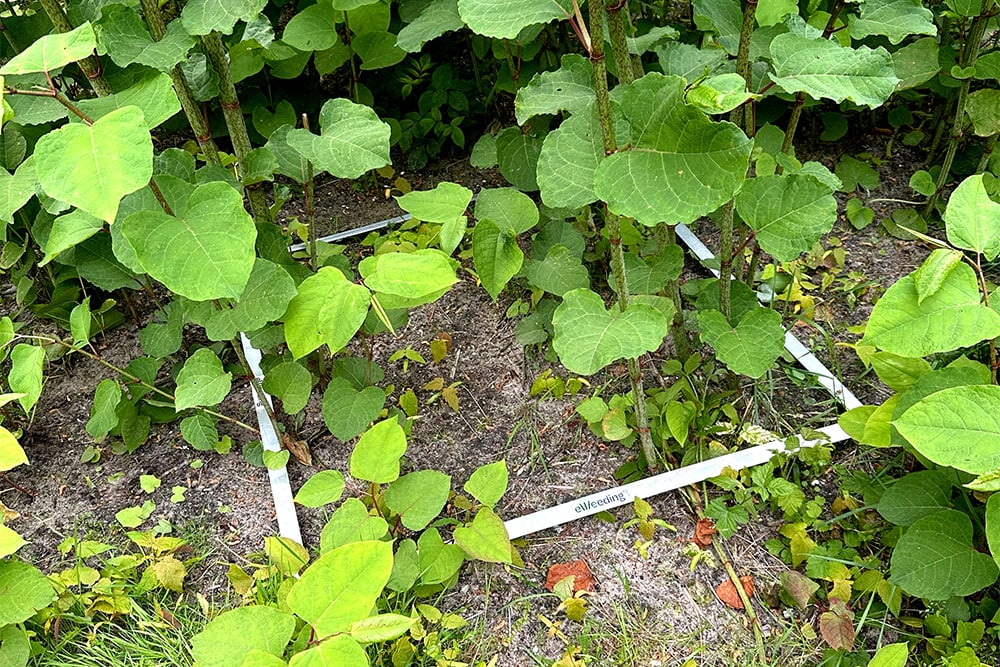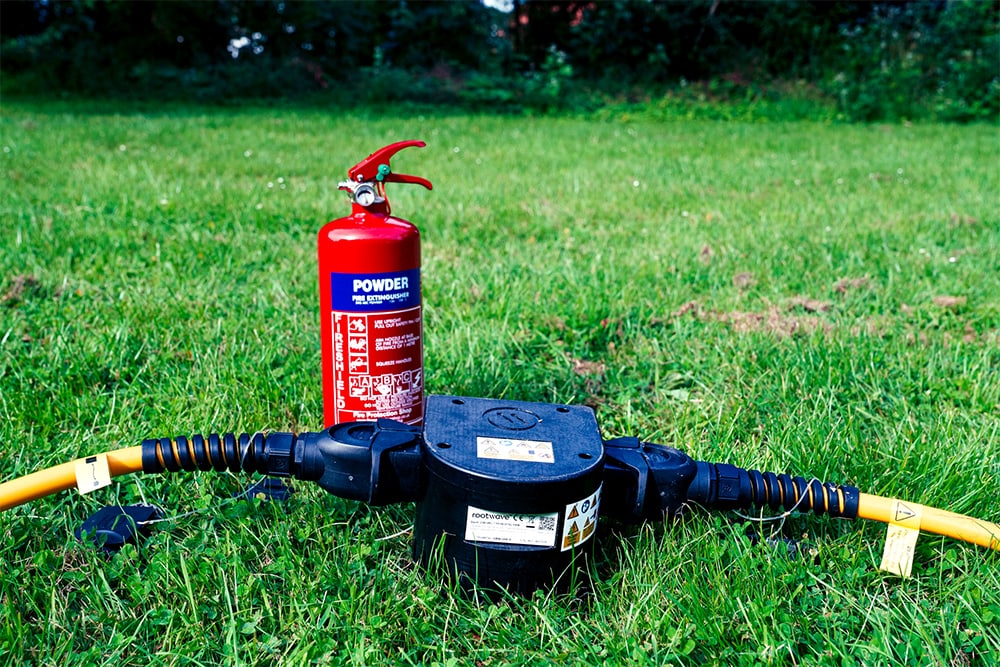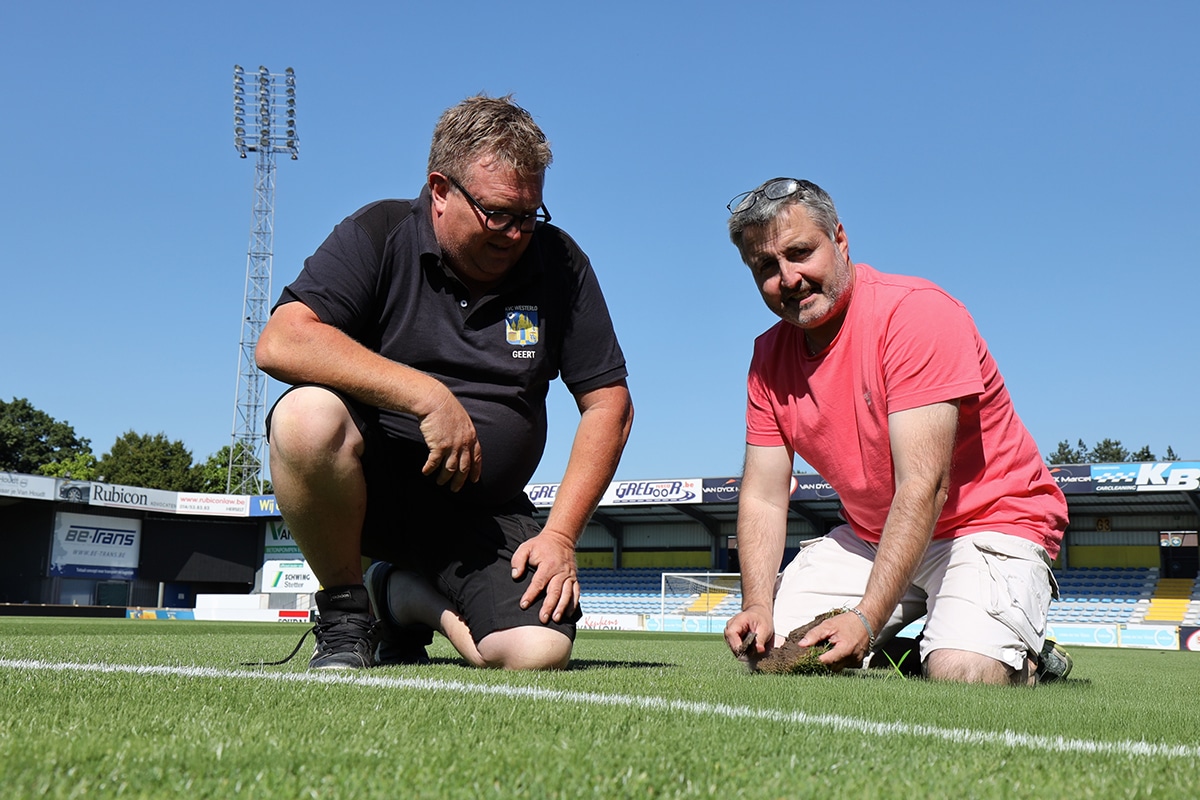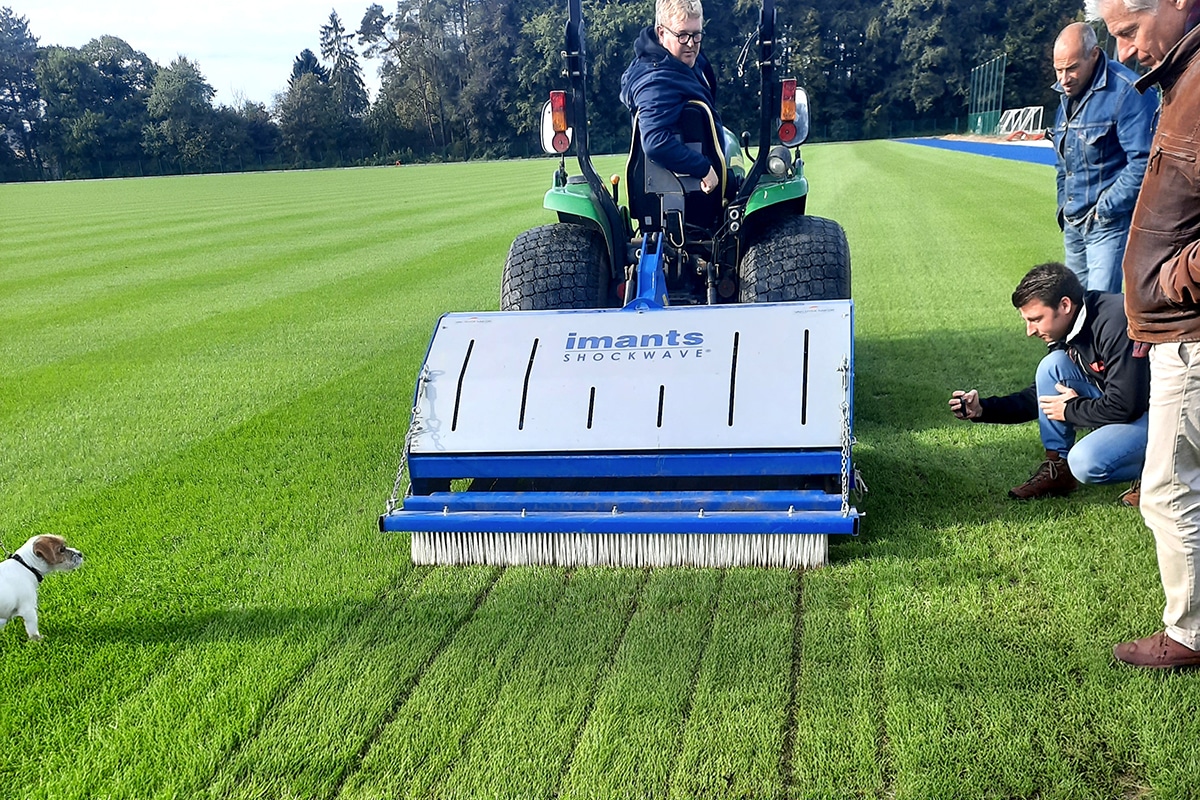
Electricity fights Japanese knotweed
Royal Salt Golf Club launches innovative weed remover
Pesticides often have troubling effects on both wildlife and human health. It has therefore long been no news in the industry that there is busy research into sustainable and economically viable alternatives. Weeding with electricity is increasingly coming to the fore in this regard.
eWeeding offers a revolutionary approach to weed management using electricity, which is both efficient and environmentally friendly. Founded by Michel and Sonja Wimmers, the company introduces an innovative method that outlines a promising future in sustainable agriculture and landscape management. Michel Wimmers: "eWeeding originated from a project I did at Bayer Cropscience. Electricity is actually the answer to the use of crop protection products on sports fields, and by extension, public areas. This trend, of course, has been going on for more than a decade. We want the public to have less contact with those agents, for obvious reasons that a lot of studies have shown."

The power of electrolysis
"The advantage of electricity? It 'knows' the root action of a plant," Michel clarifies. "The electric current causes irreparable damage to the plant's cells through electrolysis, resulting in the death of the plant. This process targets all parts of the plant, including the leaves, stems and roots, ensuring long-term effectiveness. So not only the above-ground part, but also the underground parts. And that's exactly what traditional chemicals did. The usual alternatives, such as brushing, burning, ... only destroy everything above ground. As a result, if it rains, within two to three weeks it's back there in full force. Now we have a perfectly working alternative, but without the disadvantages of chemical compounds that remain in the soil, the groundwater, and thus enter the food chain for humans and animals."
"For Bayer, it was too small to roll that out globally, so we corporatized, to apply this in the Benelux. Because the Netherlands and Belgium are absolute leaders in the ban on chemicals. An additional advantage is that it is a relatively small region, in an hour or two or three you have driven from one side to the other."
Pioneering safe and sustainable weed management
"We are currently applying this technique mainly in two areas. The first area we have the invasive exotics, such as giant hogweed and Japanese knotweed, and the second to permanently eliminate weeds on pavements. In the beginning, we especially made sure that you can do this perfectly safely, because we work with high voltages, up to 5,000 V. We also looked at what the effects were on biodiversity, and finally the long-term effectiveness. And when we came to more than satisfactory results on all three fronts, we started rolling this out."
"Our added value as a company is first and foremost that we have all the necessary expertise in-house, having helped set this up myself at Bayer at the time. I use this expertise not only to market machines and related services, but also for guidance and training. Because it is of course the intention that as many people as possible can get started with this," concludes Michel Wimmers.

Innovative pilot project
A pilot project is currently underway to eliminate Japanese knotweed on the beautiful fields of the country's most beautiful and largest golf club, Royal Zoute Golf Club. Jos Vankriekelsvenne, director Royal Zoute Golf Club: "I came across eWeeding through an article in the well-known magazine for the green sector, GreenPro. Because we had subscribed to the LIFE DUNIAS program of the Agency for Nature and Forests, which wants to restore our Flemish coastal dunes by removing weedy plants. And so we came across Japanese knotweed, against which absolutely nothing helps. Nature and Forest suggested we dig everything out. But when you then see that these exotics are (among other things) near beautiful eighty-year-old oak trees, that is absolutely not an option. Reading an online article by GreenPro, I then sent an email to eWeeding. After consultation on the golf course and the plan of action drawn up based on Wimmersson's inspection, we decided to proceed with a three-year program. We are obviously very curious to see the final results. What we have seen to date is already promising!"




